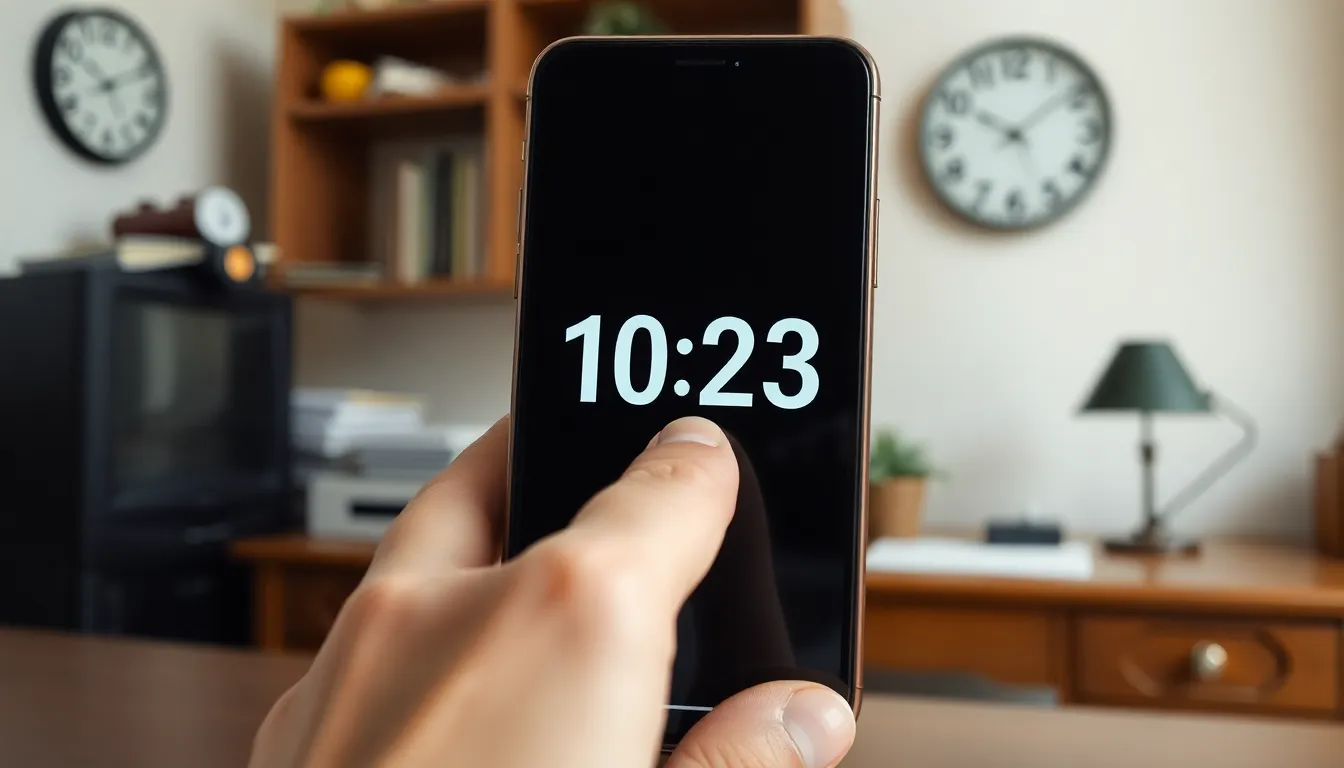Ever found yourself staring at the clock, wondering how long until 10:23? Whether you’re anxiously waiting for that morning meeting to wrap up or counting down to your favorite TV show, time can feel like a sneaky little thief. It drags on when you’re bored and speeds up when you’re having fun.
Understanding Time Calculations
Calculating time intervals serves practical purposes in daily activities. Knowing how to measure time accurately enhances productivity and supports effective planning.
Importance of Time Management
Effective time management increases efficiency and ensures that responsibilities get completed on schedule. Prioritizing tasks enables individuals to focus on important activities, allowing for better use of available hours. For example, using scheduling tools or creating to-do lists helps break down larger tasks into manageable steps. By allocating specific times for activities, people minimize stress and enhance focus on their goals.
Common Time-Related Questions
Many people frequently ask how to calculate time differences. Questions often arise about converting hours into minutes or determining how much time remains until a specific event. For instance, understanding that there are 60 minutes in one hour aids in these calculations. Additionally, inquiries about time zones become relevant, especially for those coordinating meetings across different regions. Clarity in these questions leads to more organized time management practices.
Methods to Calculate Time

Calculating time accurately can aid in effective planning and enhance daily productivity. Several straightforward methods exist for determining how long until 10:23.
Using Basic Math
To calculate time using basic math, one can subtract the current time from 10:23. For example, if it’s 9:15, the calculation would look like this: 10:23 minus 9:15 equals 1 hour and 8 minutes. This method works with any two times, making it versatile for various scenarios. If the current time exceeds 10:23, find the next day’s equivalent. Simply add 24 hours to account for the time shift.
Employing Digital Tools
Digital tools streamline time calculations significantly. Many smartphones and computers come with built-in clocks that display the current time down to the second. By using alarm or timer apps, users can set specific reminders for 10:23. Online platforms also offer countdown clocks that indicate precisely how much time remains until a set point. These tools eliminate manual calculation errors, simplifying time management for various tasks.
Real-Life Applications of “How Long Until 10:23”
Understanding how long until 10:23 has practical implications in various aspects of daily life. Knowledge of time intervals aids in effective management of both personal and professional tasks.
Scheduling Meetings
Scheduling meetings can become more efficient when individuals know the exact time remaining until a specific hour. Knowing how long until 10:23 allows professionals to allocate their time better before a meeting starts. When someone is aware that only 30 minutes remain, they can prioritize and finalize essential documents or prepare discussion points. By being mindful of this timing, attendees arrive organized and ready to engage, enhancing the overall productivity of the meeting. Utilizing digital tools offers additional support, providing reminders for imminent appointments.
Planning Events
Planning events significantly benefits from accurate time calculations. When organizing activities, knowing how long until 10:23 enables individuals to coordinate various elements like catering, entertainment, and guest arrivals. Navigating the timeline efficiently helps ensure that critical tasks occur sequentially and on schedule. For instance, if an event starts at 10:23, coordinating logistics and confirming vendor availability well beforehand improves event execution. Relying on countdown reminders can help stay on track and minimize last-minute stress, creating a more enjoyable experience for everyone involved.
Tips for Accurate Time Estimation
Accurate time estimation plays a vital role in effective planning and productivity. Focusing on specific techniques ensures clarity in time management.
Avoiding Common Mistakes
Rushing to estimate time often leads to errors. Individuals frequently overlook the need to account for unexpected interruptions. Calculating time in smaller increments improves accuracy. Ignoring factors like traffic or breaks can skew predictions. Taking a moment to evaluate previous experiences also enhances future estimates. Successfully planning around potential delays keeps schedules on track.
Utilizing Technology
Embracing technology simplifies time estimation. Smartphone apps efficiently track time intervals and send reminders. Online countdowns offer visual cues for important deadlines. Calendar integrations help users sync tasks with set times. Using digital assistants to ask about conversion between time zones streamlines planning. Prioritize these technological tools to boost time management skills.
Understanding how long until 10:23 can significantly impact daily productivity and time management. By accurately calculating time intervals and utilizing available tools, individuals can streamline their schedules and reduce stress. Whether it’s for a meeting, an event, or personal tasks, knowing the exact time remaining helps prioritize responsibilities effectively.
Incorporating technology into time management practices not only simplifies calculations but also enhances overall organization. With the right approach, the anticipation of time can transform from a source of anxiety into a powerful tool for achieving goals. Embracing these strategies ensures that every moment counts, allowing for a more efficient and fulfilling daily experience.
